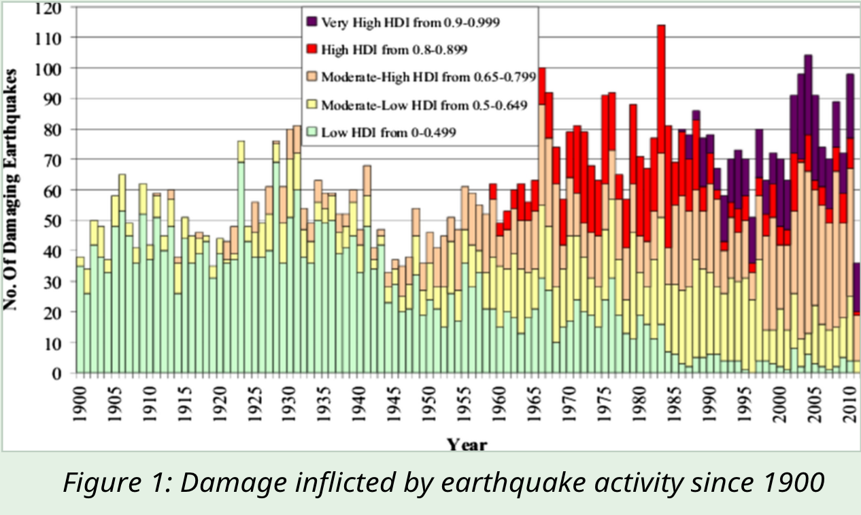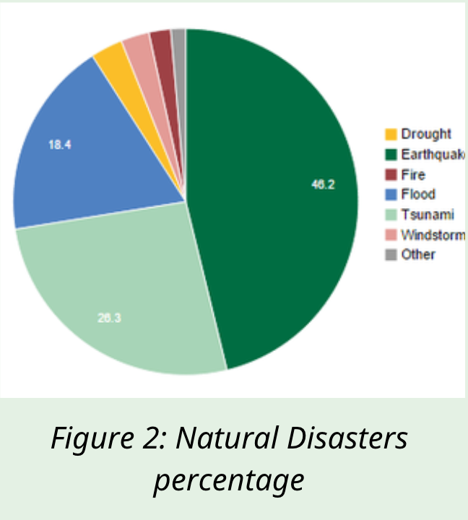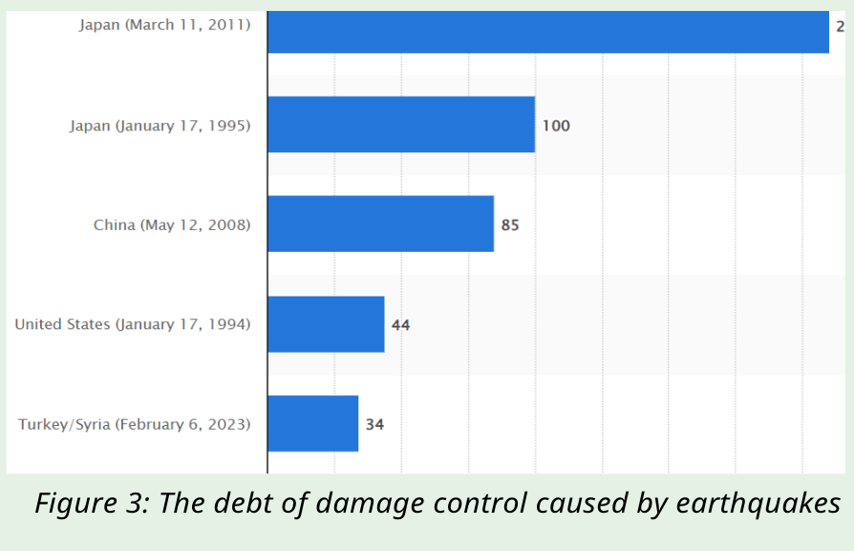Harnessing the Power of Fiber-Optics and Wave Interference using Sound Waves to Develop an Early-Detection and Mitigation System for Earthquakes
Sara Albastaki, Nafiseh Aysheh- DNS: Al-Barsha
What is the problem
Unpredictable and abrupt, earthquakes have the potential to cause extensive damage, thousands of fatalities, and billions of dollars’ worth of economic losses annually. The US Geological Survey reports that the average yearly number of earthquakes has increased recently to above 750,000, with the greatest earthquakes in history resulting in economic damage exceeding $1 trillion. Even more shockingly, half a million earthquakes occur each year, resulting in 20,000 incidents and 750,000 deaths per year. Since tectonic plate movement is the primary cause of earthquakes, early identification and planning are essential for reducing the effect of these disasters. Stable solutions, alert systems, and response procedures to lessen seismic damage are inadequate. Our idea was based on a gizmos exploration we delved into, and it inspired our train of thought. More of that will be discussed later on.
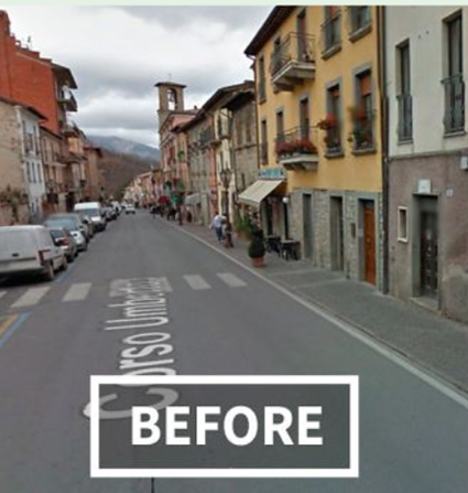
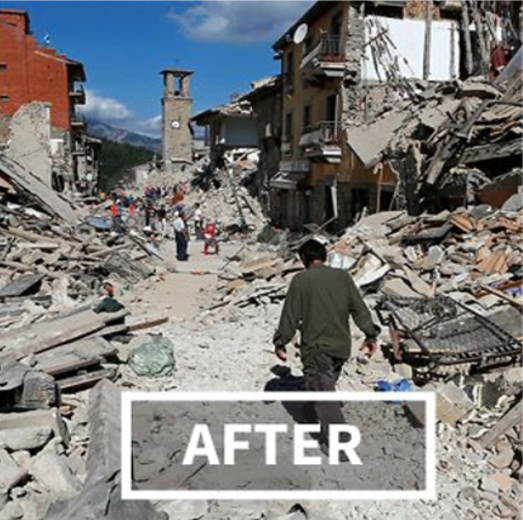
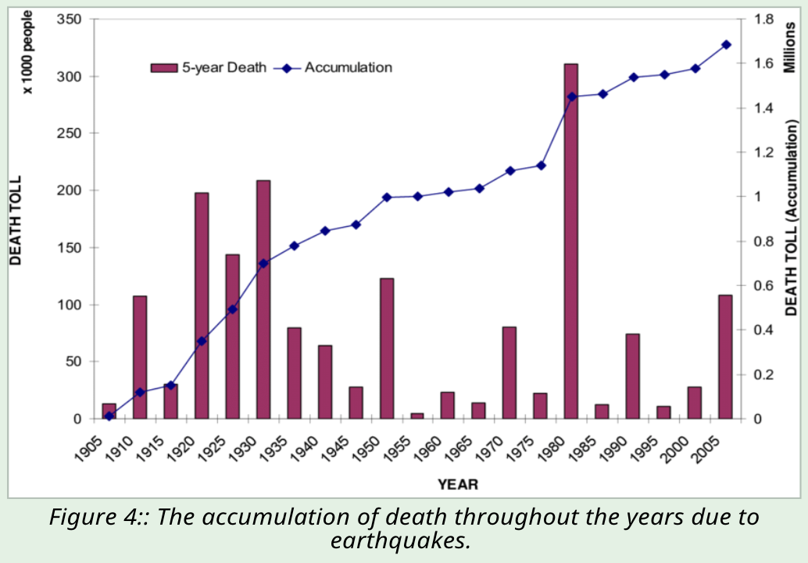
How Gizmos comes into consideration
Through our simulation using Gizmos, we conducted a thorough analysis of the time it takes for an earthquake to propagate to a specific area or city. This simulation also enabled us to investigate the characteristics of seismic waves, revealing that P-waves are the fastest and most non-destructive of all wave types. Notably, our findings suggest that P-waves are the initial waves to reach the surface, often preceding S-waves and surface waves. This insight led to the development of.. whether we would be able to detect a p-wave before a surface wave hits the city? And what we would be able to contradict or mitigate the p-wave and lessen its magnitude?
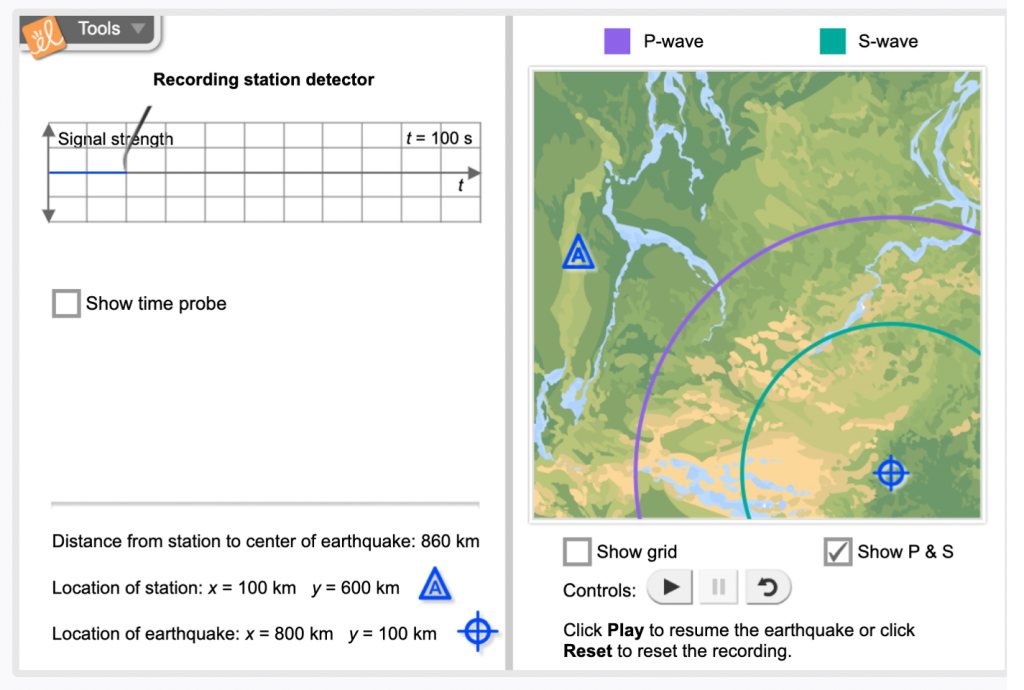
Why current technologies have been deemed insufficient
The purpose of the seismograph was to quantify and capture the seismic waves produced by earthquakes. It offers useful data on Earth’s crustal activity and seismic activity, enabling scientists to investigate wave properties and patterns and develop earthquake warning and forecasting systems.
In order to provide a visual depiction of waveforms on paper or a computer chart, a seismograph first translate the seismic waves into physical movements, which are subsequently transmitted to a pen or digital device. This enables the analysis of magnitude, depth, and location by scientists
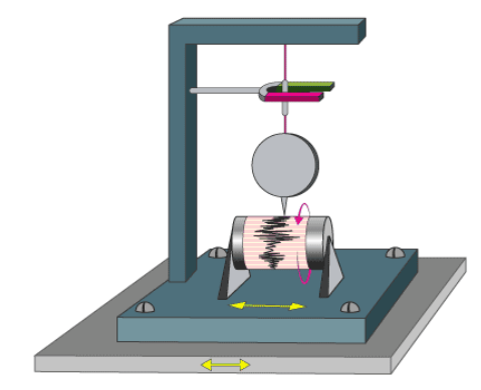
Seismographs respond slowly. There is a long interval between the occurrence of an earthquake and the issuing of warnings, which can have disastrous effects. P-waves typically take 10–30 seconds to reach a seismograph, and then another 10–30 seconds are needed for the alert to be sent. The United States Geological Survey (USGS) estimates that there can be a 10–20% increase in fatalities and damage expenditures for every 10-second lag in warning issue. The National Earthquake Information Centre (NEIC) estimates that up to 30% more people could die and $1.5 billion more in damage with a one-minute warning lapse.
Hypothesis 1
The strategic embedding of gyroscope sensors, alongside pressure sensors and optical fiber wires, deep within the outer crustal layer of the Earth, it is posited that the detection of P waves will be successfully achieved prior to the arrival of impending destructive waves.
Hypothesis 2
Leveraging the gathered data from the early detection module, and implementing the propagation of sound waves with comparable frequencies and opposing amplitudes to seismic vibrations, it is hypothesized that the interference of destructive waves can effectively mitigate the magnitude of an earthquake, consequently enhancing the resilience of vulnerable areas and reducing their susceptibility to damage
Purpose
There has been a connection made between the recent shift in plate tectonics and increasing seismic activity, volcanic reactivation, and possible disruptions to Earth’s axis rotation. Because earthquakes continue to cause disruptions in the lives of impacted populations, a solid and practical solution is imperative. Even though earthquakes have happened often throughout history, there are still insufficient warning systems and comprehensive reaction plans in place to lessen the damage they cause. Given the significance of early detection, the goal of this project is to create a workable, realistic, and persuasive approach to deal with this problem. We can advance sustainable industrialization, strong infrastructure, hospitable urban environments, and safeguard everyone’s health and well-being by coordinating with SDGs 9, 11, and 3.


Background Information
Seismic Wave
Seismic waves are the oscillatory motion of the Earth’s surface caused by the earthquake’s exertion of force, similar to the response of jelly inside a bowl when tapped on its side. Seismic waves are classified into four types: P (primary), S (secondary), L (love) and R (rayleigh)
P-Wave

P wave is a sound wave that goes through any solid, liquid, or gas. By compressing and dilating the atoms of the medium it passes through
Love wave
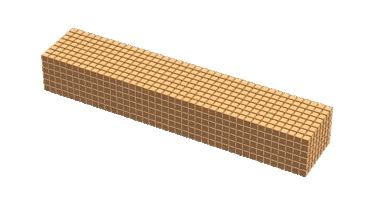
Love wave, a type of seismic surface waves in which particles move with a side-to-side motion perpendicular to propagation of earthquake
S-Wave

S- waves are transverse shocking waves that go through solids and not liquids. they follow the p waves, but instead of traveling in a push–pull motion, the particles travel in perpendicular to the direction of wave propagation.
Rayleigh wave

Rayleigh Waves are surface waves that travel in an elliptical pattern, creating both vertical and horizontal motion the direction of wave propagation.
Wave Interference
Wave interference happens when two or more waves cross over and merge in a area of space. The interaction between the waves’ amplitudes, or intensities, at their meeting point creates a composite waveform. This interaction can have a variety of impacts on the resultant wave.


More on the Simulation

The P-Wave took 146 seconds before arriving to the recording station and was detected being 880 km away from the Epicenter
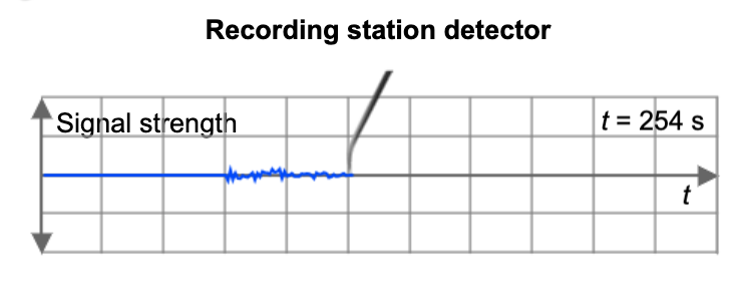
The S-Wave took 254 seconds to reach the recording station, the difference between the time frame of a p-wave and an s-wave to reach the recording station was 94 seconds. as per our calculations.
Can we detect and mitigate an earthquake in less that 94 seconds?
The Solution
Optical fiber cables are renowned for their exceptional speed, boasting the capacity to transmit data at the speed of light. This unparalleled velocity is essential for facilitating rapid communication, particularly in situations where timely information is crucial, such as during earthquake monitoring and emergency response.
The Calculations
Since the speed of an optical fiber cable is 3×10^8 m/s, we were able to calculate the speed of our detection module in replace of the seismograph if it were applied in real life from the deepest spot humans have been able to dig which is 12.2 km below earth’s surface, with the use of the speed equation (S=d/t). With the calculations
T= (12,200)/(3×10^8)=40.6 microseconds
Harnessing the Power of Fiber-Optics
Ending with our Mitigation system:
The mitigation system, situated on the Earth’s surface, will utilize the concept of destructive wave interference to counteract the destructive power of seismic waves. This innovative approach will involve the use of a specially designed speaker placed on the surface of the Earth, which will emit carefully calibrated sound waves that resonate with the frequency of the incoming earthquake waves. The sound waves will be transmitted through the Earth’s surface, creating an opposing wave pattern that will cancel out the destructive energy of the earthquake.
Starting with the detection system:
For this project, a gyroscope sensor is used to detect movements underground occurring on the X,Y and Z-axis in order to provide an early warning of an earthquake, while a pressure sensor is used to assess the pressure 12 km into the earth. The Arduino board is utilized to process the data from both sensors, effectively integrating their signals to identify seismic activity. Together, the two sensors work efficiently to identify seismic activity, with a particular emphasis on the first P-wave that appears at the beginning of an approaching earthquake, once detected the gathered data will be sent through our transmission system
And through our transmission system:
Once the data is collected and processed by the Arduino board, it will be transmitted through an optical fiber cable to the mitigation system. This high-speed communication link will enable the real-time transmission of critical information, allowing for swift and effective response to seismic activity. The optical fiber cable will provide a reliable and secure means of transmitting data, ensuring that critical information is transmitted promptly and accurately to the mitigation system. This connection will enable the mitigation system to respond promptly and effectively, reducing the risk of damage and any wasted time.
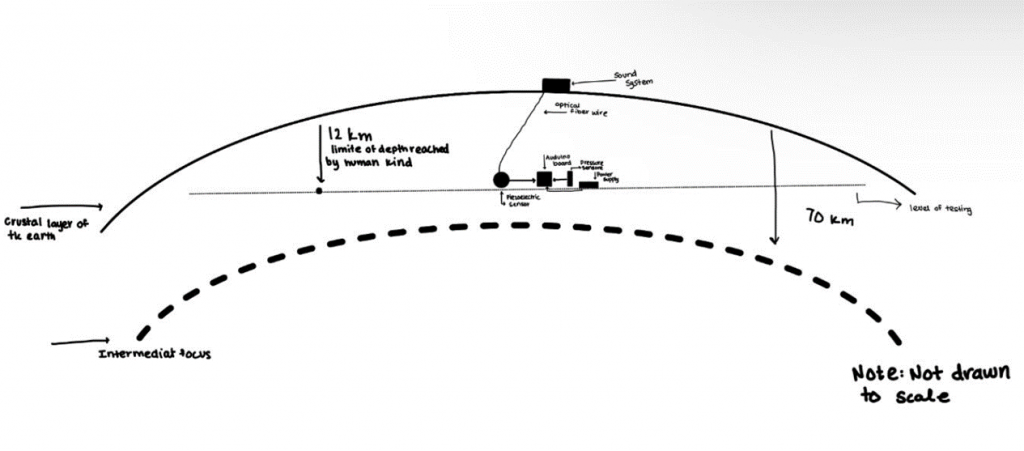
Prototype
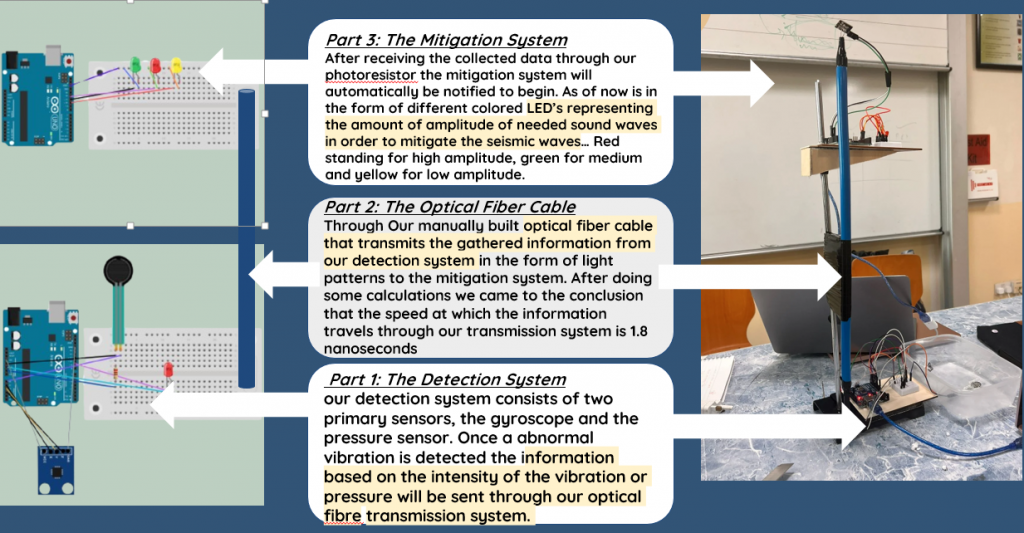
How it works
Utilizing the Arduino processor, we developed code to distinguish between the various intensity levels detected by the sensors. This enabled us to categorize the amplitude of the seismic signals as high, medium, or low, allowing us to adjust the intensity settings accordingly to mitigate the impact of the earthquakes. By implementing this code, we successfully processed the sensor data to adapt to the varying amplitude levels, ensuring optimal response to seismic events.
Yellow-Medium intensity
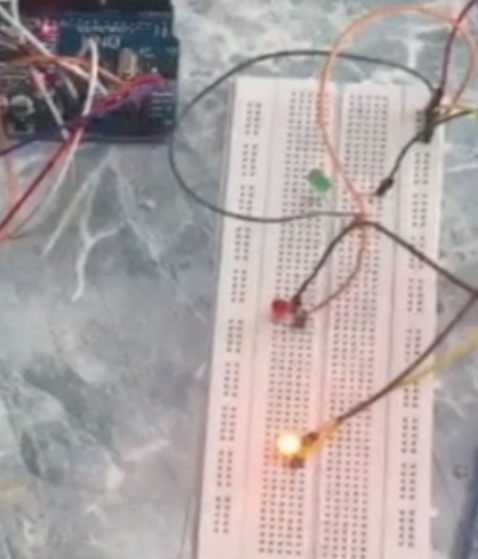
Green–low intensity
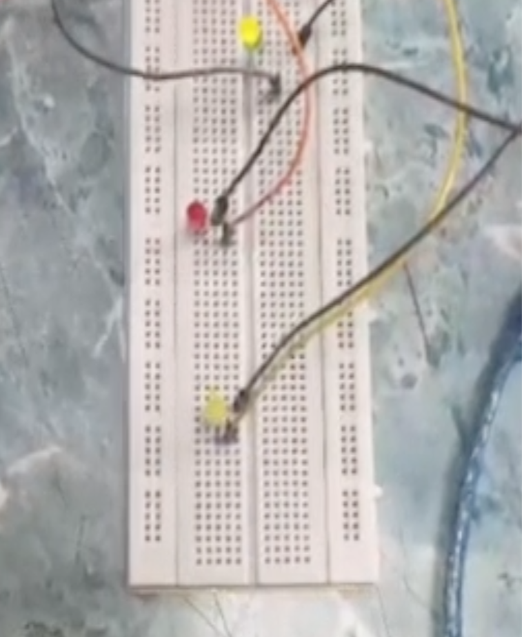
Red–High intensity
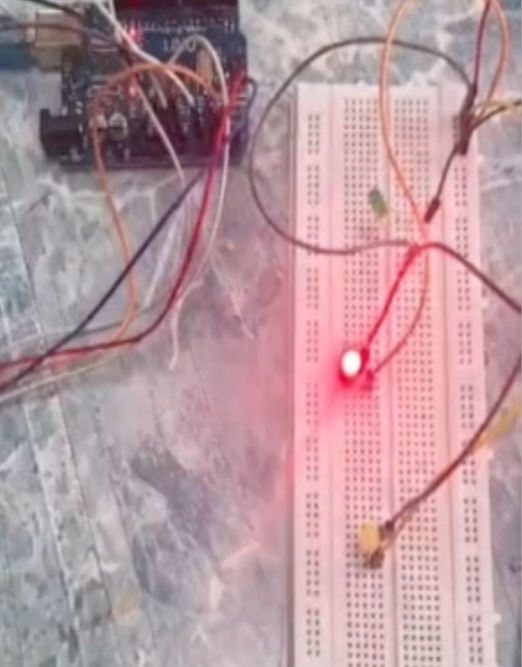
CONCLUSION
This study represents a significant leap forward in earthquake data transmission, introducing an innovative system that leverages both pressure and gyroscope sensors to capture crucial tremors. The data is then transmitted through light patterns, intelligible to a photoresistor. This achievement paves the way for a groundbreaking early warning system capable of delivering real-time earthquake data even in challenging locations. The implications of such a system extend beyond immediate data transmission, fostering the potential for enhanced disaster preparedness and response strategies.
By effectively utilizing pressure and gyroscope sensors in tandem with light-based communication, our system addresses the challenges of transmitting earthquake data in environments where conventional methods may fall short. The utilization of light patterns not only ensures reliable data transfer but also opens avenues for adaptability in regions with limited infrastructure.
Along with successfully demonstrating our role in bringing SDG’s 3,9 and 11 to life and allowing them to be implemented into the daily lives of those who struggle with ongoing appearances of earthquakes. Each of these SDG goals represent our project’s role in contributing to the SDG’s, because when we decrease the effects of earthquake we are contributing to better infrastructure and industry as in gaol 9. Also, earthquakes bring many health and wellbeing risks to those affected by one, so our projects aims to contribute to the overall wellbeing of citizens of the world. Finally, we will be able to make sustainable cities and communities, that will not be as affected by earthquakes as they are today.




REPRESENTATION ON WORKING PROJECT

5 Minute video

